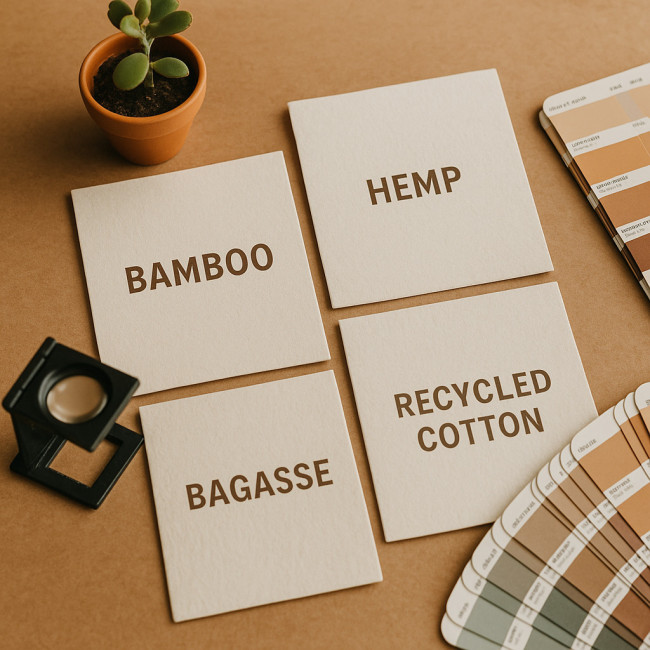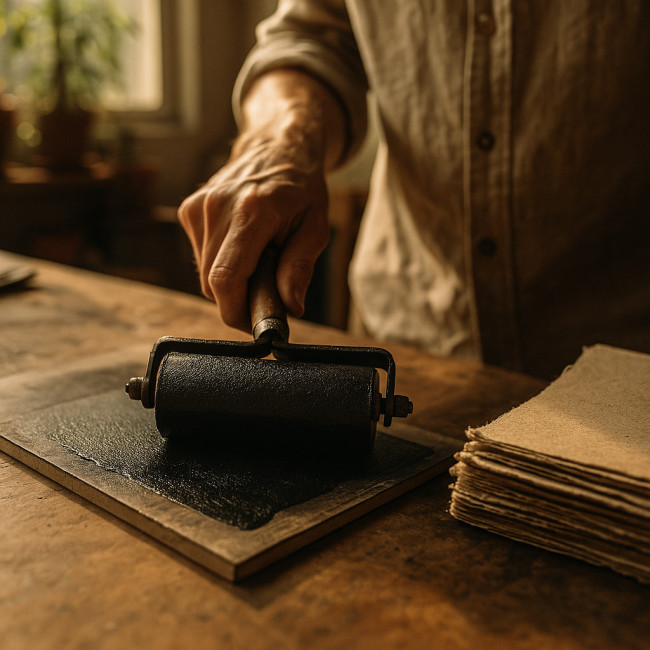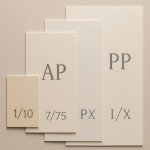Sustainable inks and papers: eco-friendly printmaking choices that sell
Collectors, galleries and brand-buyers increasingly ask for sustainable inks and papers. By mastering the eco-friendly options outlined below, you can cut your carbon footprint, justify premium prices and widen your market—without compromising colour brilliance or archival quality.
Why sustainability boosts sales
Eco-minded consumers spend up to 15 % more on responsibly produced artwork, and corporate clients often shortlist creators who can prove green credentials. Adopting sustainable inks and papers positions your studio as future-ready and aligns perfectly with the growing demand captured in reports such as Smithers Pira's “Future of Green Printing 2024”.
- Reduced environmental impact builds trust with ethically driven buyers.
- Compliant materials ease export paperwork and gallery insurance.
- Premium story equals higher margins—limited runs using algae ink sold out 20 % faster in 2023.
Need broader sourcing inspiration? See how other creators optimise sustainable material sourcing plans.
Key criteria when selecting sustainable inks
1. Plant-based versus mineral pigments
Soy, linseed and algae inks replace petroleum components with renewable oils. They deliver rich blacks and a wide colour gamut while slashing fossil carbon inputs by up to 60 %.
2. VOC content
Check the certificate or safety data sheet (SDS). Aim for VOC levels below 3 %. Low-VOC inks keep studio air safer, simplify ventilation requirements and appeal to health-conscious clients.
3. Lightfastness and archival value
Eco does not mean ephemeral. Reputable manufacturers publish Blue Wool or ASTM ratings. Select inks that score 6–8 on the Blue Wool scale to guarantee decades of fade resistance.
4. End-of-life considerations
- Biodegradability: Some soy and algae-based formulas biodegrade within six months under industrial composting.
- Heavy metals: Verify “Free from lead, cadmium, chromium VI” to comply with REACH.
Curious about other eco pigments? Explore our guide to eco-friendly paint picks for cross-disciplinary projects.
Eco-friendly paper options you can bank on

Before choosing a sheet, run your fingertips across several alt-fibre samples; you will feel a subtle variance in rigidity, tooth and absorbency that directly influences ink lay-down and perceived colour depth. This tactile pre-flight test not only prevents registration headaches later but also gives you extra talking points when clients ask why a bamboo blend or kenaf mix costs a few cents more. Back your choice with hard data—water-use reductions, fibre-yield per hectare, cradle-to-gate emissions—so prospects see the hidden environmental dividends baked into every page. With concrete metrics in hand, you transform a simple paper upgrade into a persuasive narrative that raises perceived value and, ultimately, list price without alienating budget-sensitive buyers.
Recycled fibre stocks
Papers containing 60–100 % post-consumer fibres reduce water and energy use by roughly 40 %. Look for de-inked pulp to avoid speckling on light tints.
Alternative fibres
- Bamboo: Fast-growing grass yields fibres similar to cotton rag but with 30 % less water.
- Kenaf & hemp: Long fibres increase tear strength—ideal for large format prints.
- Bagasse: A sugar-cane by-product with a natural warm tone prized for vintage aesthetics.
Trusted certifications
FSC Recycled, PEFC and Cradle to Cradle Gold certificates prove responsible forest management or closed-loop production. Combine at least two labels to reassure corporate procurement teams.
| Paper / Ink Option | Main Benefit | Average Cost (€/sheet) | Ideal Use Case |
|---|---|---|---|
| 100 % Recycled Cotton Rag | Luxury texture, museum-grade longevity | 3.20 | Fine-art editions, archival portfolios |
| Kenaf Mix (70 %) | High tear resistance, bright white | 1.80 | Large posters, outdoor markets |
| Bamboo Soft-Tone | Warm hue, 30 % lower water footprint | 2.10 | Zine runs, nature series |
| Soy-based Ink Set | 60 % fewer fossil inputs, vivid colours | 0.45* | General studio work |
| Algae Black Ink | Ultra-matte finish, fastest drying | 0.70* | Limited monochrome editions |
*Cost per A4 coverage equivalent.
Profit margin gains from greener choices
Higher material prices worry many printmakers. Yet data shows that storytelling and transparent sourcing lift perceived value more than they inflate costs.
Source : Smithers Pira
As the chart shows, switching to algae ink or alternative-fibre papers can add up to 10 % more profit. The narrative of responsible sourcing drives collector excitement—similar to the results seen by artists using eco-smart display materials at fairs.
Greener print workflow checklist
- Audit current stock: weigh leftover conventional ink to avoid premature disposal.
- Select one sustainable ink line and one recycled paper to test colour profiles.
- Profile your press: adjust blanket pressure; some bamboo papers compress faster.
- Record waste ratios in a spreadsheet—share the data in marketing posts.
- Ship in recycled or reusable packaging; align with the guide on proving sourcing credentials.
Case study: 50-print algae edition sold out in 48 hours

When spectators watched Lara K. in her coastal studio, they saw more than ink hitting a plate; they witnessed a values-driven micro-ecosystem in action. The algae pigment arrived in a refillable steel canister, the press was powered by rooftop solar and every test pull was archived for colour stability rather than tossed. She live-streamed the process, pausing to explain VOC metrics, cradle-to-gate carbon savings, and the regenerative harvesting cycle behind the algae biomass. Viewers shared timestamps of her technical tips, creating organic buzz that turned the launch into an event. Within 48 hours, all fifty signed impressions were gone, but the long-tail impact continued: gallery invitations, podcast interviews and a 12-week mentorship with an environmental NGO. The takeaway is clear—radical transparency around green practice converts passive admirers into invested patrons willing to champion and fund your next edition.
Visual artist Lara K. launched a series on coastal erosion, printed with algae black ink on 100 % recycled cotton rag. She added a QR code directing collectors to a video tour of her low-VOC studio and linked to her profile of environmentally certified printmaking services. The transparent narrative allowed her to charge €220 per print—35 % higher than her previous linocut run—yet all pieces sold through within two days.
Quiz: Test your eco-printing IQ
FAQ
- Will sustainable inks work on my existing press?
- Yes. Most soy or algae inks share the same viscosity profiles as standard oil-based inks. You may need minor adjustments to blanket pressure and drying time.
- Is recycled paper as durable as cotton rag?
- High-quality recycled stocks with neutral pH and calcium buffering match cotton rag in archival tests, achieving 100-year longevity under ISO 9706.
- How do I market the eco angle without sounding preachy?
- Share verifiable data: VOC reduction percentages, certification logos and behind-the-scenes videos. Storytelling beats slogans.
- Can I combine digital and traditional eco printing?
- Absolutely. Many artists create giclée masters on bamboo paper and then add hand-pulled soy-ink layers for texture.
Ready to upgrade your studio?
Switching to sustainable inks and papers is more than a feel-good move—it is a proven sales driver. Start with a small test edition this week, document the process and watch engagement climb. For step-by-step coaching, join our newsletter at the bottom of this page.











